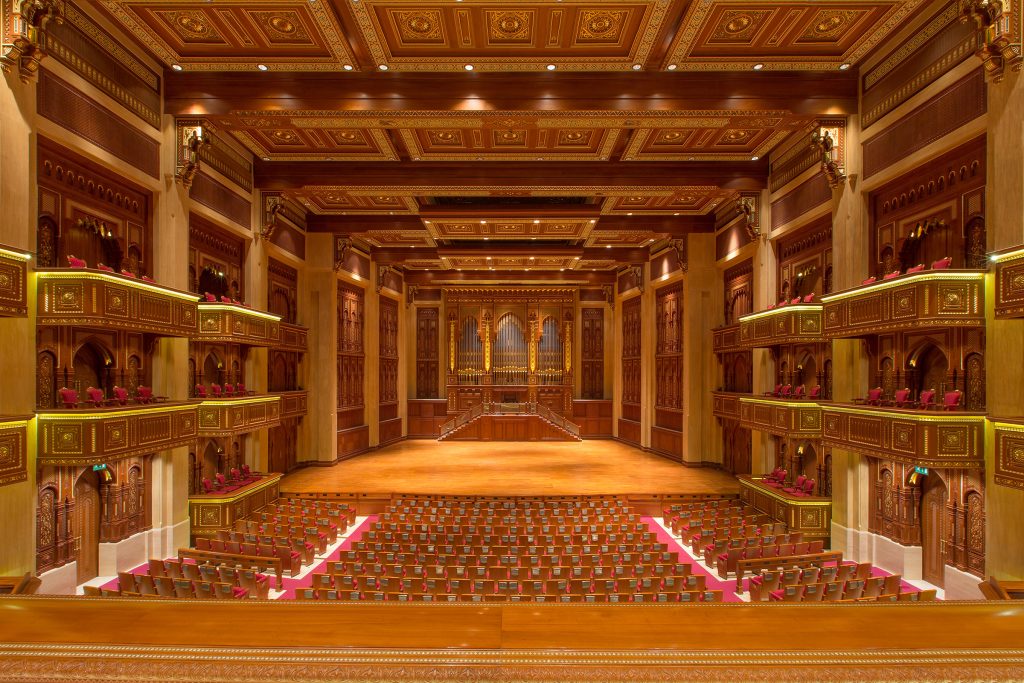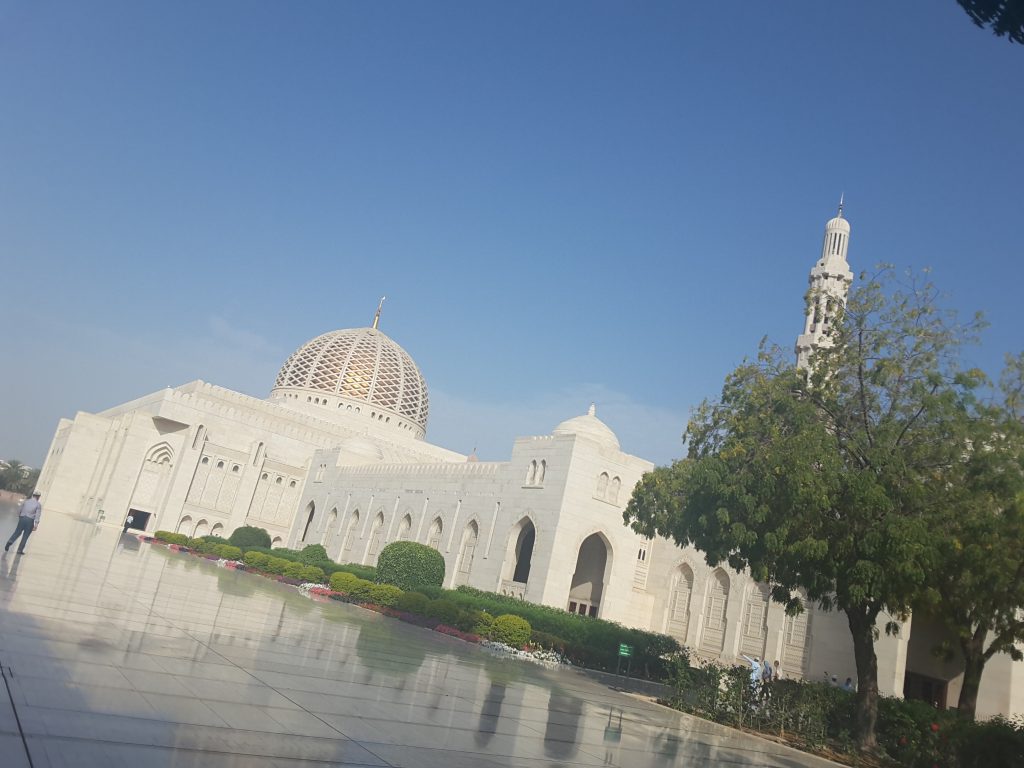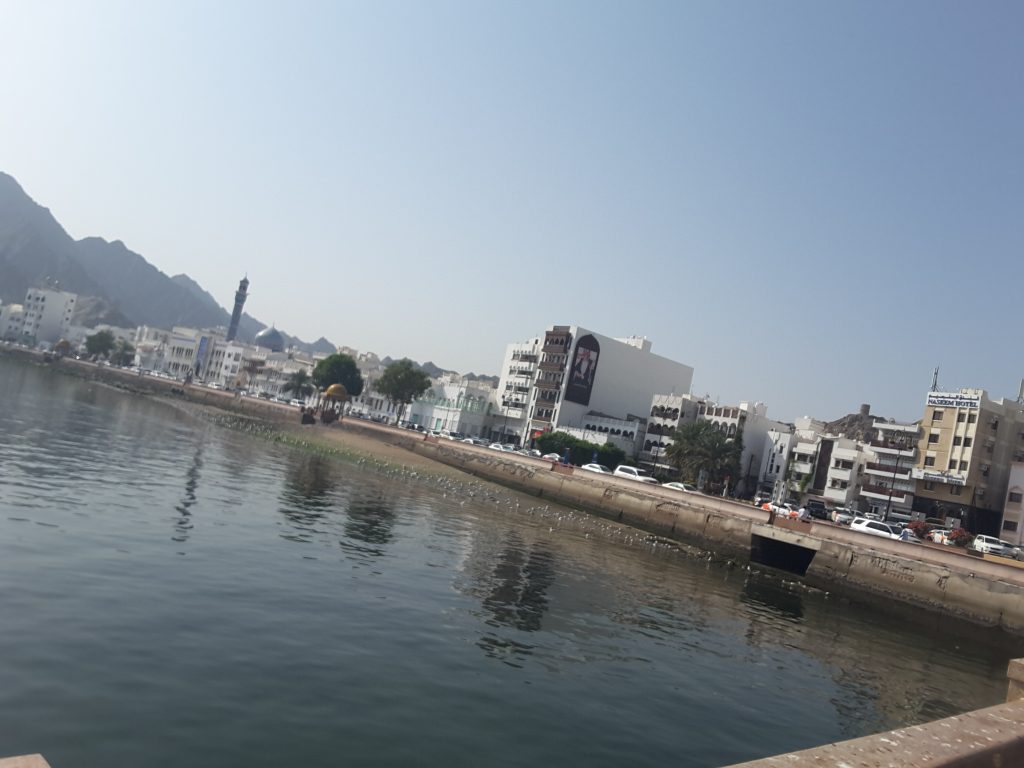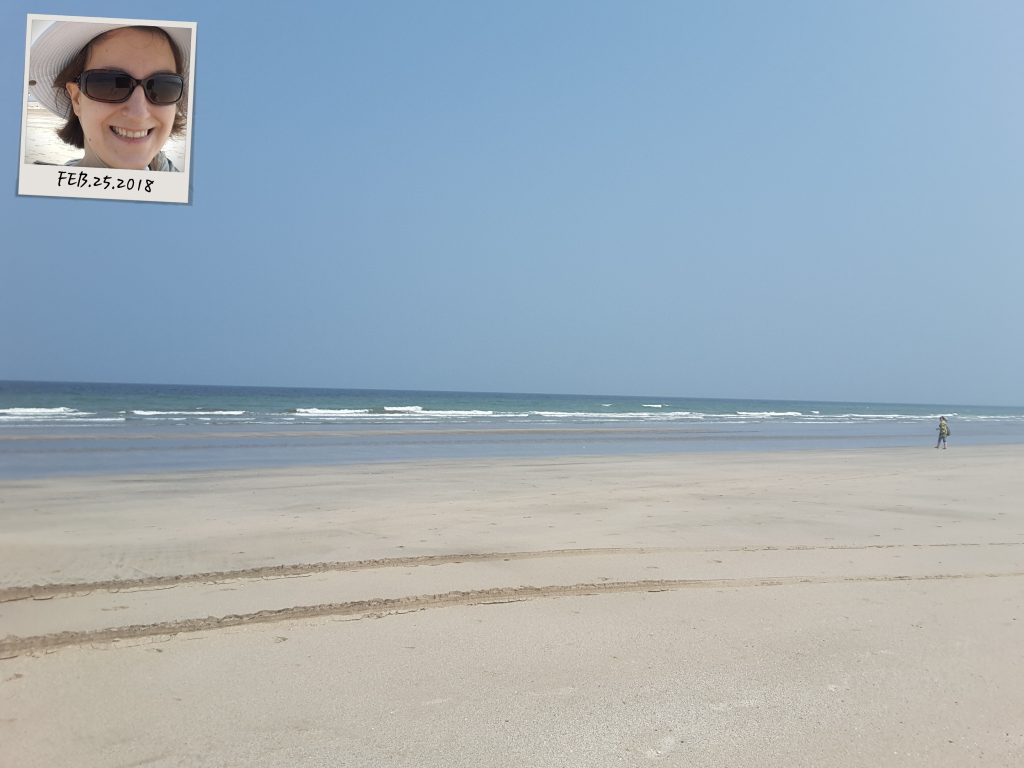Oman had long been on my mind as my next quest overseas. The promise of dates, palm trees, sand dunes, bright, open, sun-tainted skies, and the subtle, warm smell of sand in the air are charms irresistible to anyone who has ever had a taste of the Middle East. Oman has all that and more. In 2011, its capital Muscat did something unprecedented and established the first opera house ever in the Arabian Gulf region. It made international headlines, and shot Oman to the top of my travel bucket list. And last week, my wishes came true.
I was in Muscat, Oman for three-full days, just enough time to get a good feel of the city, see all the major sights and catch a performance or two at the amazing Royal Opera House Muscat. An ambitious traveler could possibly also fit in an excursion to the outskirts of the city for outdoor activities such as camping in the desert, taking dips in valleys, scuba-diving or dolphin-watching. I instead opted to stay downtown and let the performances at the Opera House define my schedule. And the daytime, I dedicated to the city itself.
Below is my Muscat Top 5:
The Royal Opera House Muscat (ROHM)
This is one of the most unique opera houses in the world – and my favorite site in all of Muscat. Whether you are a fan of opera and classical music or not, this is a must-see venue. The Royal Opera House was established in 2011 under the vision of Oman’s renowned leader Sultan Qaboos. The opening made international headlines, with a magnificent staging of Turandot, performed by Fondazione di Arena di Verona in a Zeffirelli production, conducted by superstar tenor Placido Domingo. And since then, it has been continuing to lead a culture of classical music, opera, and ballet in the region, performed by guest performers of the highest calibre from across the world.

The Royal Opera House is also an architectural wonder. It is grand and sublime, but not pretentious or overwhelming. On the contrary, from the spacious, white-marbled foyer to the auditorium adorned fully in teak wood, the architecture and intricate design echo a very refined taste and superlative quality of workmanship and material. Every single square-millimeter reflects the care and respect that His Majesty Sultan Qaboos had for the arts and music, and his determination for gifting his people with it.
I was fortunate enough to catch two performances: Prokofiev’s Peter and the Wolf and Other Tales, and Puccini’s Norma, both performed by the Rouen National Ballet and Opera. Although it is possible to visit the Royal Opera during daytime as a tourist, I would highly recommend planning your visit to Oman around performance dates, and to experience the venue for its raison-d’etre. The annual program in announced months in advance and can be easily found by visiting its website.
The Sultan Qaboos Grand Mosque
This is not your ordinary mosque. It is one most breath-taking structures I have ever seen. As its name suggests, it is indeed grand. Yet, it is not exaggerated. Like the ROHM, it showcases splendour in finesse. From its dome to walls, carpets, its refreshing cloister, and colorful flower beds outside, the Sultan Qaboos Grand Mosque is grand in size, but elegant and intricate in design and feel. The floor is inlaid with the largest-hand-woven single piece silk carpet in the world. Arches and columns adorn the cloister area, and pigeons fly to and from their nests built in between. As you walk around, you will see locals exchanging amicable greetings, while tourists try different angles to get as much of the grand structure as possible in a single frame.

The Corniche and the Mutrah Souq
These two sites go hand-in-hand as they are both in the same area. The Corniche is the Omani equivalent of Izmir’s famous ‘kordonboyu‘. Perfect for a promenade along the seaside, it has a fortress on either side, traditional white-washed two-three story buildings in the background along the boulevard, and Oman’s renowned Mutrah Souq a few hundred meters up along the way.

The Mutrah Souq is a mini-version of Istanbul’s Grand Bazaar. Its size and structure makes it much more accessible and manageable than the kilometers of labyrinth characteristic of its Turkish counterpart. Here, you will find shawls, stuffed camel toys, the Omani headdress, local garments, overpriced spices (much cheaper at super markets if you have the time to visit one), and exaggerated golden ornaments for brides-to-be. The vendors, mostly of Indian origin, try to get you to pay the highest price possible, and you have to try to haggle down the price to at least a half or even a third of that is asked. I am not much of a shopper, but I could not resist the za’atar (Oriental spice mix, made of thyme, sumac and sesame seeds), and walked back to the Corniche with a few hundred grams in hand.
National Museum and the Royal Palace duo
These sites are right by each other and more appealing together than each would have been on its own. Like the ROHM, the National Museum was also founded under the vision of the national hero Sultan Qaboos. It pays homage to the history, culture, archeology, and anthropology of Oman. The collection is not magnificent, but the quality and standard of presentation is impressive, as well as the design and architecture of the museum.
Here you will find sea vessel models of all sizes and models; Omani musical instruments, weapons of war, and furniture from royal residence and offices; clay models of Omani ancient sites, towers, structures and villages; and photographs, and films on Omani culture. This is also where you can see the wall-sized multi-media panel displaying photos, news and quotes of Sultan Qaboos from throughout his lifetime. Learning about his motto of embracing development and modernity without trampling nature and tradition; and of embracing values and religion, without inducing extremism, is one of the highlights of my trip to Oman. I can only wish this for the rest of the world.
The Royal Palace is just that, the “office” of His Majesty Sultan Qaboos. The place and role of Sultan Qaboos in the history and presence of Oman is what makes this site important. Naturally, you are not allowed beyond the gates and get only a look from about 100 meters away. But since you are in Oman already, you should not let it pass by. You can also enjoy the orderly gardens and colorful flowers all around and breathe in a sight of history with the two ancient mud fortresses in the background on either side of the palace.
The Beaches
I left Istanbul in late February, blanketed under layers of cashmere and a down jacket, woolen socks in winter boots and a Scottish wool scarf. A few hours later, I was squinting against the sunshine, taking in the familiar scent of desert sand, and enjoying the warm breeze as it gently caressed my face. When, on my final day, I had a few spare hours before I had to head to the airport, I decided to make the most of the weather and pay a short visit to the seaside.

I remember this late-winter escapade of mind for its deliciously warm water; the vast stretch of sandy beach, with the water remaining ankle-knee deep meters into the sea; the sea critters and creatures of all sorts dancing around in the crystal clear water; and the lack of ugly concrete invading the shoreline. However, I also observed what I thought to be rip tides, which makes me hesitate before declaring Oman as my permanent beach destination. Yet, with the Royal Opera House of Muscat, Oman will continue to remain among my top destinations of travel. And while enjoying nights of opera, fine music and ballet in this land of the Middle East and the desert, a rejuvenating walk in warm, sandy beaches is certainly a welcome bonus!









